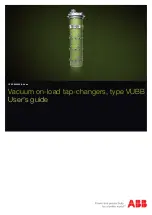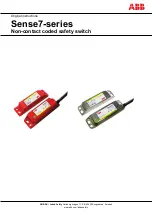
4
Instruction Booklet
IB0162063EN
Effective January 2014
O & M Manual for the EGS Metered, Service
Entrance Automatic Transfer Switch with Relay Control
Eaton Corporation www.eatoncanada.ca
The benefits of the SE configuration are:
•
Combined service disconnect and over-current protection in the
ATS reduces the overall equipment and installation costs.
•
Fewer components and power connections reduce maintenance
requirements.
1.3 Transfer Switch Catalogue Number Identification
ATS equipment catalogue numbers provide a significant amount
of relevant information pertaining to a specific piece of equipment.
The Catalogue Number Identification Table (see Table 1) provides the
required interpretation information.
Table 1. ATS Catalogue Numbering System.
1.4 Environmental and Operational Conditions
Normally, an ATS is applied indoors in an electrical equipment room.
It can also be used for normal outdoor applications (with standard
type 3R enclosure) where the equipment is subject to falling rain,
freezing temperatures, and 95% humidity (non-condensing). The
ambient temperature range for operation is between -20 and 70°C
(-4 and 158°F)..
E GSC 200A M SE
Metering
Metered
ampere
rating
100A=100A
200A=200A
Type
Generator
Switch
with
Relay
Manufacturer
Eaton
1.5 Glossary
With respect to their use within this document and as they relate to
transfer switch and controller operation, the following terminology is
defined.
available
A source is defined as “available” when it is within its undervoltage
setpoint ranges for the nominal voltage setting.
Connected
Connected is defined as when the input is shorted by an external
contact or connection.
Failed or Fails
A source is defined as “failed” when it is outside of the applicable
voltage setpoint ranges for the nominal voltage and for a time
exceeding 0.5 seconds after the time delay emergency fail (TDEF)
time delays expires.
Failsafe
Failsafe is a feature that prevents disconnection from the only avail-
able power source and also forces a transfer or re-transfer operation
to the only available power source.
re-Transfer
Re-transfer is defined as a change of the load connection from the
Generator to the Utility.
Utility
Utility is the primary source (normal source, normal power source,
or normal).
generator
Generator is the secondary source (generator emergency source,
emergency power source, emergency, standby, or backup source).
Utility: Failed or Fails
Utility is defined as “failed” when it is outside of its undervoltage
setpoint ranges for the nominal voltage and frequency setting.
generator: Failed or Fails
Generator is defined as “failed” when it is outside of its undervolt-
age/underfrequency/overfrequency (if applicable) setpoint ranges
for the nominal voltage and frequency setting for a time exceeding
0.5 seconds after the Time Delay Emergency Fail (TDEF) time delay
expires.
Transfer
Transfer is defined as a change of the load connection from the
Utility to the Generator power source.
Unconnected
Unconnected is defined as when the input is not shorted by an
external contact or connection.
Service
Entrance
Canadian
Service Entrance
Approved




































